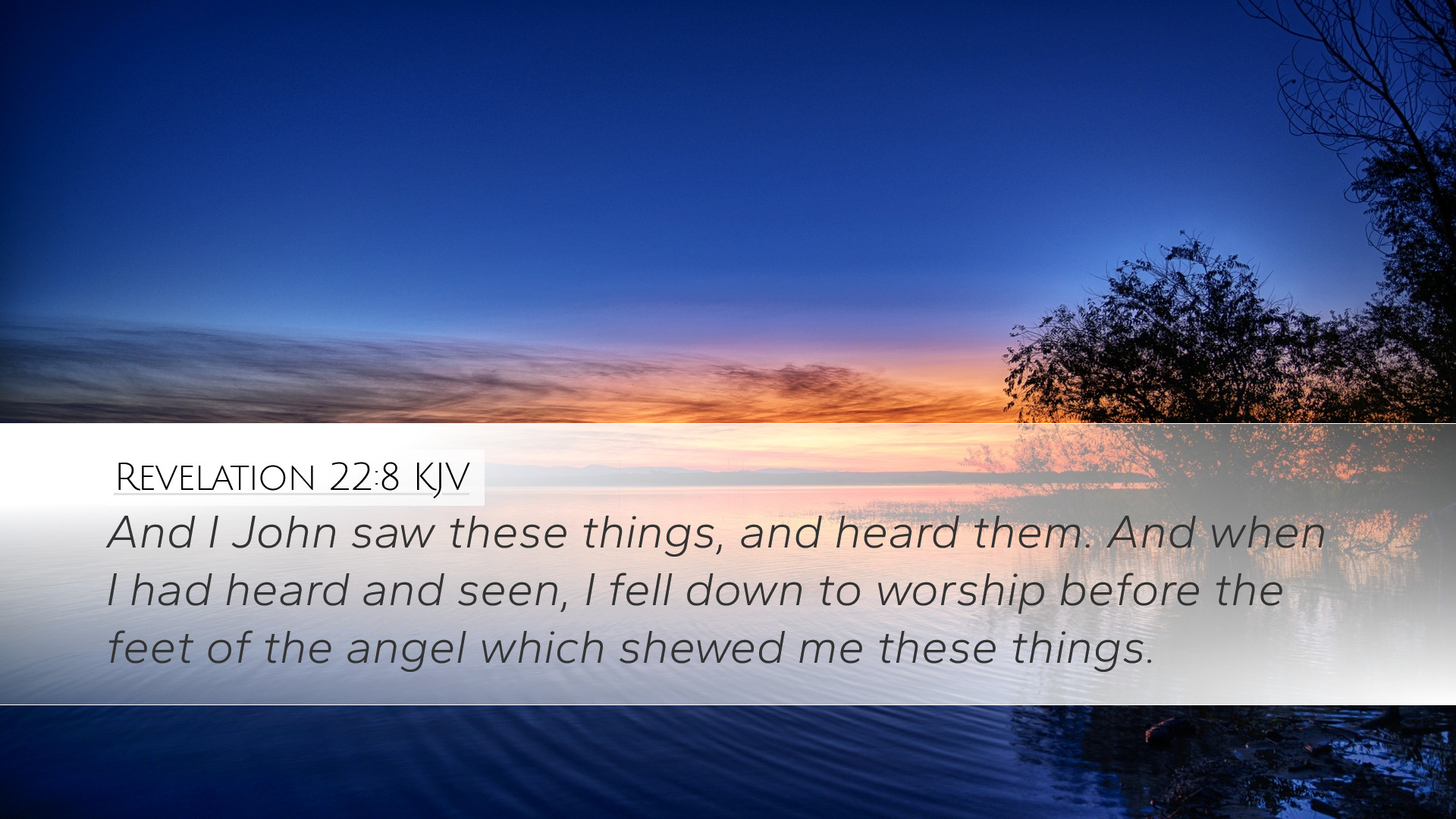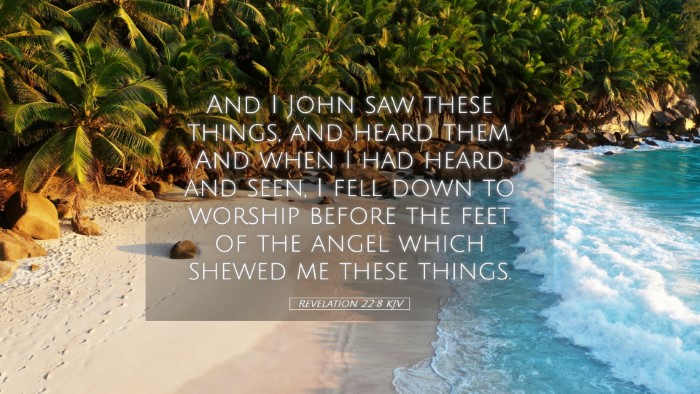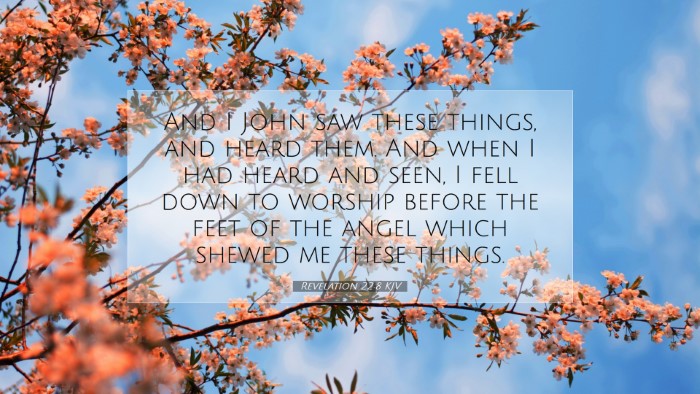Commentary on Revelation 22:8
Verse Text: "And I John saw these things, and heard them. And when I had heard and seen, I fell down to worship before the feet of the angel which showed me these things."
Overview
The final chapter of the Book of Revelation presents profound themes of worship, divine revelation, and the awe-inspiring presence of God. Revelation 22:8 recounts a significant moment experienced by the Apostle John as he witnesses the culmination of divine truth revealed through an angelic messenger. This commentary aims to elucidate the theological significance of this verse, drawing insights from classical public domain commentaries.
Exegetical Insights
The phrase "I John saw these things, and heard them" emphasizes John's personal experience of the Revelation. Unlike previous visions, this final encounter underscores the tangible aspects of what John sees and hears. In his commentary, Matthew Henry notes that John's firsthand account not only affirms the reality of his vision but also invites readers into a shared acknowledgment of the divine's communication.
John's Response
John's immediate reaction—falling down to worship the angel—is rich in meaning. Worship is a powerful theme in Revelation, as it not only denotes reverence but also a recognition of authority and divinity. Albert Barnes points out that John's act of worship, although directed towards an angel, highlights the potential for human error in ascribing reverence due only to God. This moment serves as a reminder to believers of the ultimate object of worship and the necessity of discernment.
Theological Themes
- The Nature of Revelation: John's vision is profoundly revelatory; it speaks to the direct communication between God and humanity. Adam Clarke articulates that every revelation of God invites an appropriate human response, which must be grounded in faith and humility.
- The Role of Angels: In Revelation, angels serve as mediators of God's message. The angel in this passage performs the role of a guide and instructor, illuminating truths that John is to convey. This highlights the significant relationship between the divine and the messengers who execute His will.
- Worship and Awe: John’s reaction to fall down before the angel reveals not only the awe associated with the divine but also the complexities of worship itself. Matthew Henry cautions that while the angel confirms the veracity of John's vision, the worship due to God must be preserved from misattribution to created beings.
Pastoral Applications
The implications of John’s encounter in Revelation 22:8 offer rich material for pastoral reflection and application:
- Encouragement to Receive Revelation: Pastors can encourage congregants to remain open to divine revelations in their lives. Just as John received the vision, believers today are called to be attentive to God's communications.
- The Danger of Misplaced Worship: In an age of spiritual pluralism, it is vital for pastoral leaders to remind their communities about the sovereignty of God and the perils of deviating from true worship.
- The Need for Humility: John’s humility in response to the vision exemplifies the attitude believers should cultivate. Pastors can lead by this example, demonstrating a posture of reverence before the Lord's work in their lives and in the church.
Conclusion
Revelation 22:8 serves as a timeless reminder of the profound experiences that come from encountering the divine. John's vision exemplifies the necessity of worship, the peril of misattribution, and the importance of a correct response to God's revelation. It beckons both scholars and laypersons to deeper reflections on the nature of worship and the integrity of their spiritual lives, aligning perfectly with the greater narrative of Revelation that calls all creation to recognize and respond to the grandeur of God.


